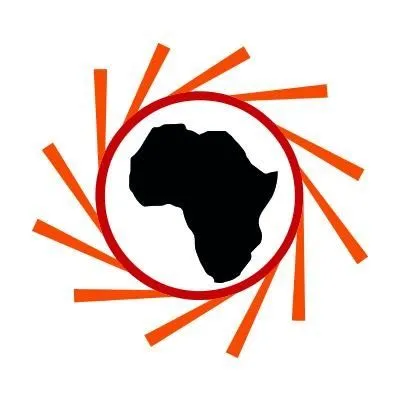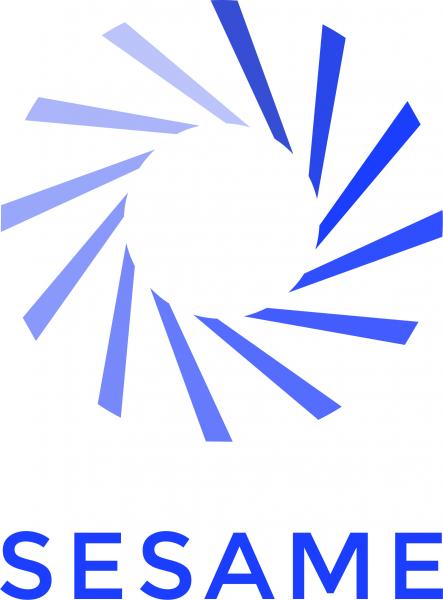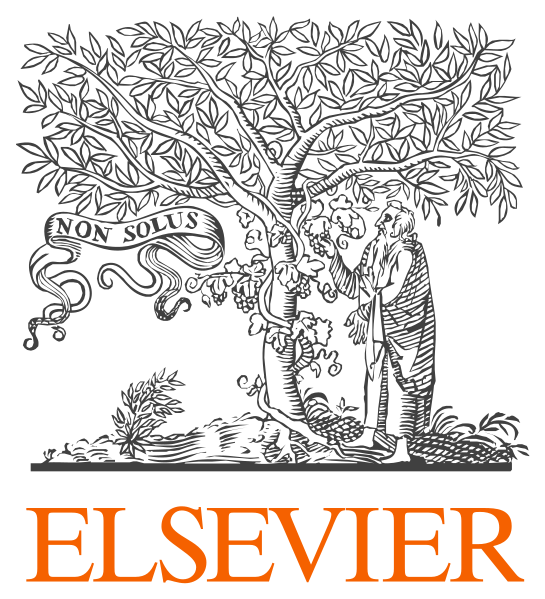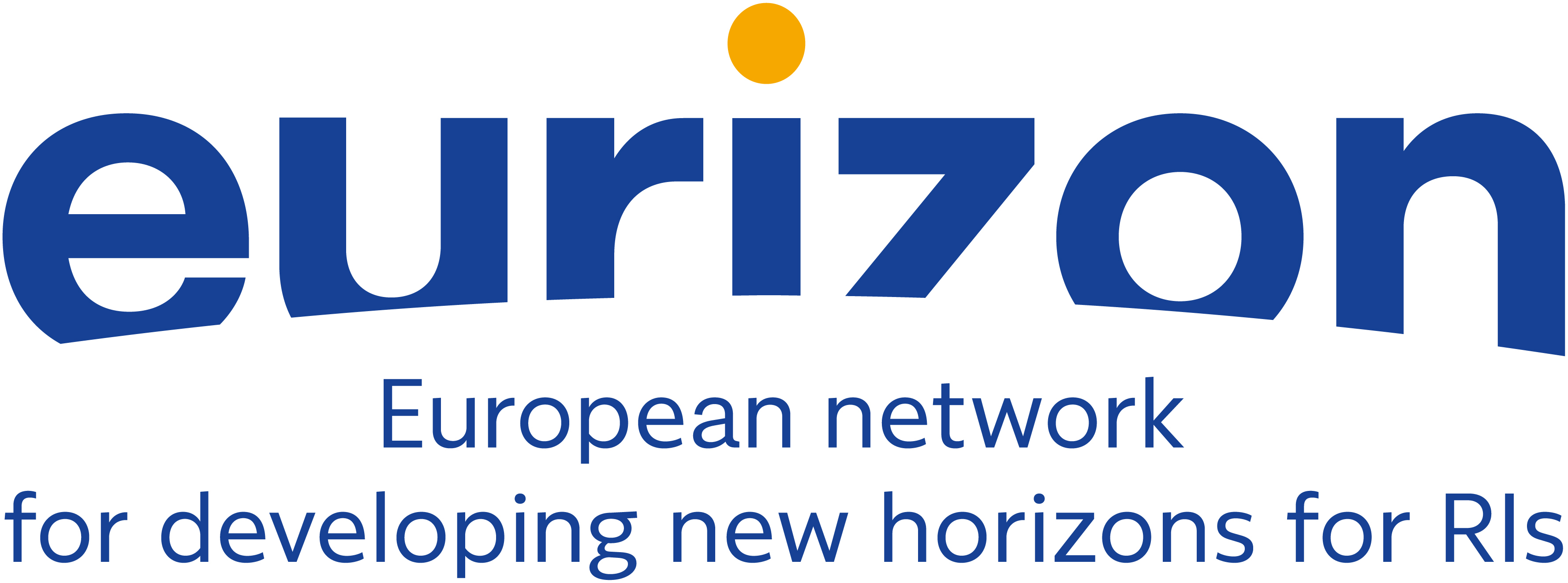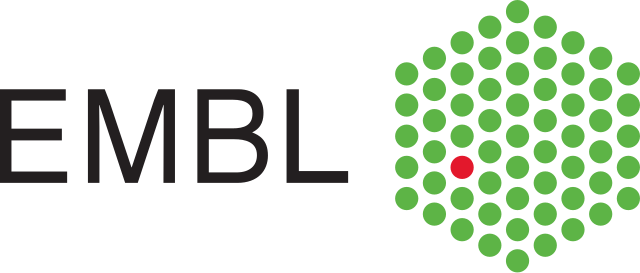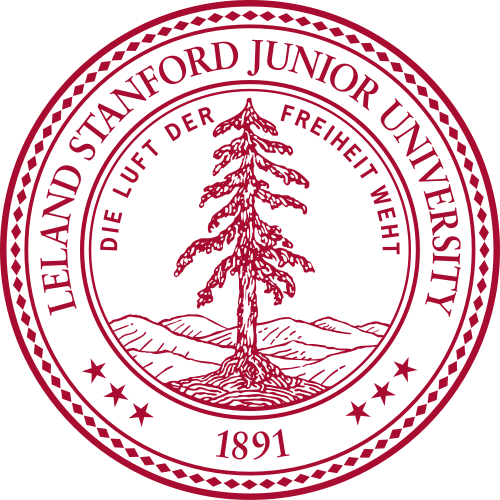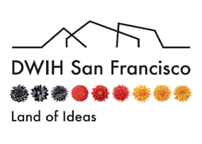Thematic Tables
The Thematic Tables will be hosted by organizations/foundations and are intended to bring together participants for networking and informed discussion on a specific topic complementary to plenary topics or as an additional deep dive/focus. The tables will take place during the extended coffee break on the first day of the conference. The outcome of the tables will be used in the course of the conference and will feed into the closing session.
Please note that the tables are already full - all assignments have been made.
Research infrastructures are important knowledge hubs that offer strong opportunities for scientific communities. Through scientific and technological advancements, they contribute to pressing solutions of our societies and have strong impacts on the socio-economic developments. However, almost all research facilities are concentrated in economically well-developed regions of the world. The synchrotron radiation source SESAME (Synchrotron-light for Experimental Science and Applications in the Middle East), located in Jordan, represents a most notable exception, and another facility under planning is the African Light Source (AfLS), which is being designed to drive science, innovation and technologies for the regional needs in Africa. In this thematic table we discuss how research infrastructures could better contribute to capacity-building in economically less developed countries and how a transatlantic partnership could help to foster these developments.
This roundtable presents a comparison
between the European Union (EU) and the United
States (US) in the context of trust in science, using the
“Confidence in
research: researchers in the
spotlight”
report data as a touchstone. The analysis delves into the
differences and similarities in perceptions, insights, and confidence
levels – with a
focus on the emerging role of AI and cybersecurity in research, their
challenges and
potential risks.
The discussion aims to explore how the EU and US are navigating this
complex landscape,
with an emphasis on the crucial role of effective science
communication in bridging the
gap between researchers, the public, and policymakers. Panelists will
invite attendees
to discuss pragmatic recommendations aimed at bolstering confidence in
research and
improving the communication of scientific knowledge to diverse
audiences.
The First Quantum Revolution invoked
ground-breaking technological advancements like
transistors and lasers. With the new ability to control individual
quantum objects the
Second Quantum Revolution is evolving with an incredible speed,
leading to disruptive
novel technologies. They have the potential to revolutionize the way
how we do science
in future and to invoke a strong impact on our economy as well as on
our society.
Paying tribute to this potential, there are many national funding
lines in Europe and in
North America to support research and commercialization, but only few
transatlantic
support programs.
This thematic roundtable will focus on the opportunities in Quantum
Computing and
Quantum Sensing, discuss what are important priorities, where
opportunities for
transatlantic cooperation are used in best practice, and where new
cooperation can be
further stimulated in science to encourage funding politics to support
joined efforts.
Research security and research integrity
have become key policy topics on both sides
of the Atlantic in recent years. Practitioners, science managers and
researchers in the
EU and the US alike are addressing issues pertaining to dual use,
espionage and
cybersecurity. Whilst debates initially revolved around the People’s
Republic of China,
it has become clear that the challenges at hand are part of a much
more complex and
multifaceted paradigm shift in a fast-shifting world. Governments and
scientific
institutions must develop country-agnostic approaches and resilient
structures to ensure
that risks to research security are kept at bay and that no unwanted
transfer of
knowledge takes place. However, for National Laboratories like those
in the US and
Germany, a “one size fits all” approach to cooperation does not apply;
thus, a “case by
case”-approach must be taken. This means that, e.g., institutional
partnerships must
undergo rigorous screening, contracts and cooperation agreements need
to be watertight,
and individual (guest) scientists are subject to detailed vetting
procedures.
Whilst we all agree that international collaboration is essential to
tackle the grand
challenges our societies are facing today (like climate change or the
energy crisis),
there is a risk resulting from the aforementioned security procedures:
international
scientific cooperation may become increasingly bureaucratic and
therefore potentially
less and less appealing to our researchers.
The March 2024 JASON report
also warns against the over-regulation of science and research.
The key question we would like to address at this thematic table
therefore is: How can
we ensure the vitality and longevity of transatlantic scientific
cooperation in view of
current geopolitical tensions and ever-growing legal concerns and
administrative
restrictions? The traditionally strong and trusted partnership between
German and US
scientists should be maintained and strengthened.
Sub-questions to be discussed include:
- Research Security Policy at National Laboratories
- What is the current approach to research security policy for National Laboratories in the US and Germany (and the EU)?
- Research Security Challenges at National Laboratories
- What specific security challenges arise in the context of research infrastructures and international user facilities at the US National Labs/Helmholtz Centers?
- What common problems are there currently in contract negotiations and the implementation of cooperation agreements?
- Addressing the Challenges
- What best practices or solutions are there to the issue discussed above?
- How can we build trust and work together across the sector to come up with pragmatic solutions for issues arising from research security measures in our respective countries?
- What can the two systems learn from each other with respect to research security?
- The Future of Cooperation
- What scientific fields and research areas are the most promising for bilateral cooperation (specifically between DoE National Labs and Helmholtz) and how can we support these partnerships also from a policy and administration perspective?
- How can we effectively continue to foster dialogue and exchange between practitioners in our countries?
The international debate on the governance of AI has gained immense traction in the past few years. One of the issues being discussed is how to govern the dual-use impact of AI, establishing international norms on the use of AI, while simultaneously respecting national technological, corporate, and security interests. National governments, such as the United States, and multilateral entities, such as the United Nations and NATO, have crafted frameworks to discuss and regulate the dual-use impact of AI. One of the problems that national and multilateral regulatory bodies face is the immense pace with which AI and AI-infused systems are developing. Also, the debates on commercial and security applications run in parallel, missing potential lessons from the opposite field. Another factor impacting international governance is geopolitical competition. This session highlights what different fields of research can contribute to a timely and viable governance framework for AI and its dual-use applicability.
This round table discussion will delve into the cutting-edge realms of laser fusion and novel accelerator concepts propelled by high-power lasers, with a focus on leveraging advancements in plasma science. Laser fusion, a potential avenue for clean energy production, harnesses intense laser beams to induce nuclear fusion reactions. The recent demonstration of Fusion Gain at the National Ignition Facility (Livermore, USA) has stimulated interest and support for fusion energy research in both the US and Germany, in particular with a new openness in Germany for participation in inertial fusion research. Novel accelerator concepts, powered by high-power lasers, present innovative pathways for particle acceleration, with implications spanning fundamental research to practical applications in compact light sources including FELs, injectors for high energy storage rings, future colliders, medicine and industry. Leading breakthroughs by research groups in Germany and the US may enable new industrial application areas and potential markets, particularly in secondary particle beams and radiations. The main technology hurdle for both laser fusion and novel accelerators is high power laser technology, as well as the cost and 24/7 availability and reliability of lasers. Through this discussion, experts from diverse fields will explore the latest developments, challenges, and opportunities in laser fusion and novel accelerator concepts, shedding light on the transformative potential of high-power laser technology development and plasma science in shaping the future of energy and particle beam technologies.
- What specific laser technology hurdles must fusion science and laser-driven accelerator science overcome to become widely used in research, industry, and society? Which are most important? Can transatlantic cooperation help? How?
- Is there a US-European gap in high-power laser technology?
- Are laser-driven fusion and accelerator research largely independent of each other, or should we start thinking about them as synergistic? (For example fast ignition particle sources, and/or ultra-fast X-ray back-lighters, emerging from advanced accelerator research)
Semiconductor chip manufacturing has
undoubtedly become the most advanced, complex
and cost-effective production industry in the world. At the same time
availability of
semiconductor chips has become crucial to all modern economies; the
microelectronics
value and supply chains have become extensively global and
interdependent. The fragility of
the supply chain and dependence on Asian supply links has led to
initiatives such as the US
CHIPS act and the EU’s Chips Act. However, introducing resilience or
robustness in the supply
and value chains will make them less cost-effective and manufacturing
ever smaller "high
end" chips continues to become increasingly more expensive as Moore’s
law approaches the
physical limits. Additional pressures result from the need for energy
and power
efficiency, sustainability, and new computing architectures. All of
these aspects may be tackled with
new design architectures, standards for customized chiplet production,
and the
introduction of new technologies and material systems. Chiplet design,
system-technology-cooptimization
(STCO), advanced packaging, performance security, characterization,
test and
validation technologies, and the creation of standards for chiplets,
e.g. “Bunch of Wires”
(BoW) or open source “Universal Chiplet Interconnect Express” (UCIe),
offer opportunities
for transatlantic cooperation.
This table will discuss strategies for effective information exchange
and new
opportunities for transatlantic cooperation in chip production and
microelectronics.
The concept of Open Science with its pillars Open scientific knowledge, Open science infrastructures, Open engagement of societal actors and Open dialogue with other knowledge systems (UNESCO 2021) is playing an increasingly important role not only at national level, but also in international scientific collaboration. We will discuss some aspects of Open Science with regard to the „Principles & Policies for International Scientific Collaboration“ formulated by the international round table of physics organizations. How could these crucial principles Integrity, Transparency and Reciprocity be realized under the conditions of Open Science, what can governments do to enable collaboration, and what additional aspects do we need to consider in view of today’s global challenges and growing political tensions in the world?
Many of the crucial technologies for the transition to a fossile free energy system, such as solar cells, batteries, fuel cells and electrolyzer, depend on the transport, storage and conversion of electrical carriers. Even though these technologies are already at an advanced stage of development, there is still massive room for further performance and cost improvement, as well as extension of the functional lifetime. Especially for the latter, recently often captured under the heading Science of Resilience, strong synergies seem to be possible between these different applications areas. In this table, we aim to explore what research needs and opportunities exist in this context, and what Big Science and Transatlantic Collaboration can contribute.
As global tensions rise, Western
cooperation in science diplomacy becomes more
critical. The US and EU, powerhouses in scientific research, must
leverage their
combined expertise to tackle pressing issues. Besides deepening the
cooperation between
western countries, science diplomacy offers unique chances to continue
the dialogue with
more challenging regions and can help to build trust on a global
scale.
A robust and transatlantically concerted science diplomacy framework
fosters trust by
facilitating joint research projects on climate change, pandemics, and
technological
innovation. This not only accelerates scientific progress but also
cultivates shared
goals among researchers and policymakers. Furthermore, a unified
Western front on
scientific issues strengthens global leadership, promoting responsible
research conduct
and fostering international cooperation. This collaboration is
essential for navigating
a complex world and ensuring a stable and prosperous
future.
After more than two years of a terrible war against Ukraine, this
enduring aggression has led to dramatic effects on Ukraine, and the
Ukrainian science and research system. Thousands of scientists have
left their country, universities and research infrastructures in
Ukraine have been seriously damaged. Scientific equipment and
instruments have been damaged. The conditions to carry out research in
Ukraine have significantly deteriorated.
Conducting science and sustaining a research system under these
conditions is a permanent struggle.
Specifically, the situation in Eastern Ukraine, and in Kharkiv, is
critical. The National Karazin University in Kharkiv, the Kharkiv
Institute of Physics and Technology (KIPT NASU), and the Institute of
Single Crystals NASU are among the research institutions that are hit
most.
This thematic lunch table will discuss the current picture of the
Ukrainian science system, and will try to identify the most urgent
needs where support of science, and scientists, in Ukraine is most
pressing.
Among the key questions to be addressed by this table:
- Which are lessons learned by previous and ongoing European and American support programmes and activities for Ukrainian science?
- Where should Western support be directed? For instance: Providing and shipping scientific equipment to replace damaged equipment; provide grants to scientists in Ukraine; establish more international collaborative ties and projects with the aim to support the further integration of the Ukrainian system into the international and ERA European Research Area.
- Which are the most relevant mid-term and long-term needs of sustainable Ukrainian research?
- How to mitigate brain-drain from Ukraine, and to rather simulate brain circulation by support measures and programs?
- Education: Which are specific challenges to sustain a high level of education at universities in Ukraine?
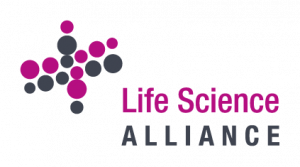 Science has made significant strides in understanding fundamental
biological processes,
yet substantial knowledge gaps persist regarding their implications
for health and
disease. The recent COVID-19 pandemic has underscored the global
nature of these
challenges and the urgent need for global coordination in combating
them. Unfortunately,
while opportunities for collaborative activities exist within
different geographical
regions like North America, Europe or the Far East that are well
established, they are
very limited across these regions. To overcome these limitations, the
European Molecular
Biology Laboratory and Stanford University have established the Life
Science Alliance
(www.embl.org/about/info/life-science-alliance/)
about a decade ago. The Alliance aims
to promote cutting edge joint research activities, training and
scientific education
across the partner sites, which are supported by external funding
partners. This
thematic table convenes experts from the partners of the Alliance to
explore how
transatlantic collaborative endeavors facilitate the development of
transformative
technologies and therapeutics, thus expediting biomedical research and
translating its
impact into improving human health.
Science has made significant strides in understanding fundamental
biological processes,
yet substantial knowledge gaps persist regarding their implications
for health and
disease. The recent COVID-19 pandemic has underscored the global
nature of these
challenges and the urgent need for global coordination in combating
them. Unfortunately,
while opportunities for collaborative activities exist within
different geographical
regions like North America, Europe or the Far East that are well
established, they are
very limited across these regions. To overcome these limitations, the
European Molecular
Biology Laboratory and Stanford University have established the Life
Science Alliance
(www.embl.org/about/info/life-science-alliance/)
about a decade ago. The Alliance aims
to promote cutting edge joint research activities, training and
scientific education
across the partner sites, which are supported by external funding
partners. This
thematic table convenes experts from the partners of the Alliance to
explore how
transatlantic collaborative endeavors facilitate the development of
transformative
technologies and therapeutics, thus expediting biomedical research and
translating its
impact into improving human health.
Today’s major technological, scientific,
environmental, and health
challenges affect nations around the world yet most Big Science is
conducted at the national level. Big science has tremendous potential
to
solve society’s pressing problems such as mitigating climate change,
ageing, migration and mobility and fighting diseases such as cancer or
Alzheimer’s. However, often it takes too long for promising solutions
to
emerge from fragmented research and find their way from lab to market.
We will discuss how transatlantic partnerships can accelerate
scientific
advancement and the commercialization of research and help implement
solutions to today’s great challenges. Questions will include what
conditions are necessary for cross-border innovation partnerships to
form,
how can we build more of those partnerships and what are the best
practices to learn from in order to increase success rates.
The thematic table will be co-hosted by DESY and Discovery Partners
Institute, who have joined forces in 2023 in a partnership for
innovation
and transfer.
Internationalization is one of the core missions of universities
worldwide. The
excellence of research is based on interdisciplinarity, diversity, and
cross-segmental
collaborations, which are fostered and accelerated through
internationalization.
In view of recent geopolitical upheavals, international scientific
cooperation has
undergone rapid changes and faces new challenges. Against this
backdrop, research
security has become a matter of national security. In June 2023,
Germany’s Federal
Government adopted a National Security Strategy that offers an
"integrated" concept of
security as a centerpiece of its scope. The strategy emphasizes the
role of science and
research and their importance as the basis for Germany's innovative
strength and
technological sovereignty.
For universities and research institutions, it is, therefore, of
central importance to
review existing or future international collaborations. The German
Academic Exchange
Service (DAAD), and more specifically its central coordination point
for international
academic collaboration, KIWi, has played a significant role in
promoting exchange and
peer learning and establishing guidelines for German universities on
how to deal with
security risks while fostering internationalization on a structural,
institutional, and
research level.
The DAAD’s position is that international exchange and academic and
research cooperation
should be interest-orientated, value-based, and risk-reflective. This
requires, among
other things, being sensitized to risks and knowing how to minimize
them in practice.
De-risking concerns in Germany must be considered in the context of
open science,
university autonomy, and academic freedom—all of which are highly
prized under the
country's federal structure and anchored in the German constitution.
At the same time,
the legality and viability of de-risking measures can be legitimately
threatened by a
diverse level of protection at the EU level, especially in the
Schengen open borders
area. De-risking procedures may be more consistent and reliable if the
European Research
Area (ERA) was subject to proposed rules for a similar degree of
protection.
What does this mean for universities and Research Institutions in
practice? How can
institutions learn from each other on a national, European, and
transatlantic level?
What impact do different approaches to Security Issues have among
European partners and
on transatlantic cooperations in HE? How can political ambitions,
internationalization
missions, and security concerns be prioritized, balanced, and
communicated?
This international thematic table aims to bring together German,
European and North
American perspectives and discuss European and transatlantic
approaches, best practices
and strategies to learn from each other, define common interests and
foster strong
attitudes towards reflective recommendations for action.

